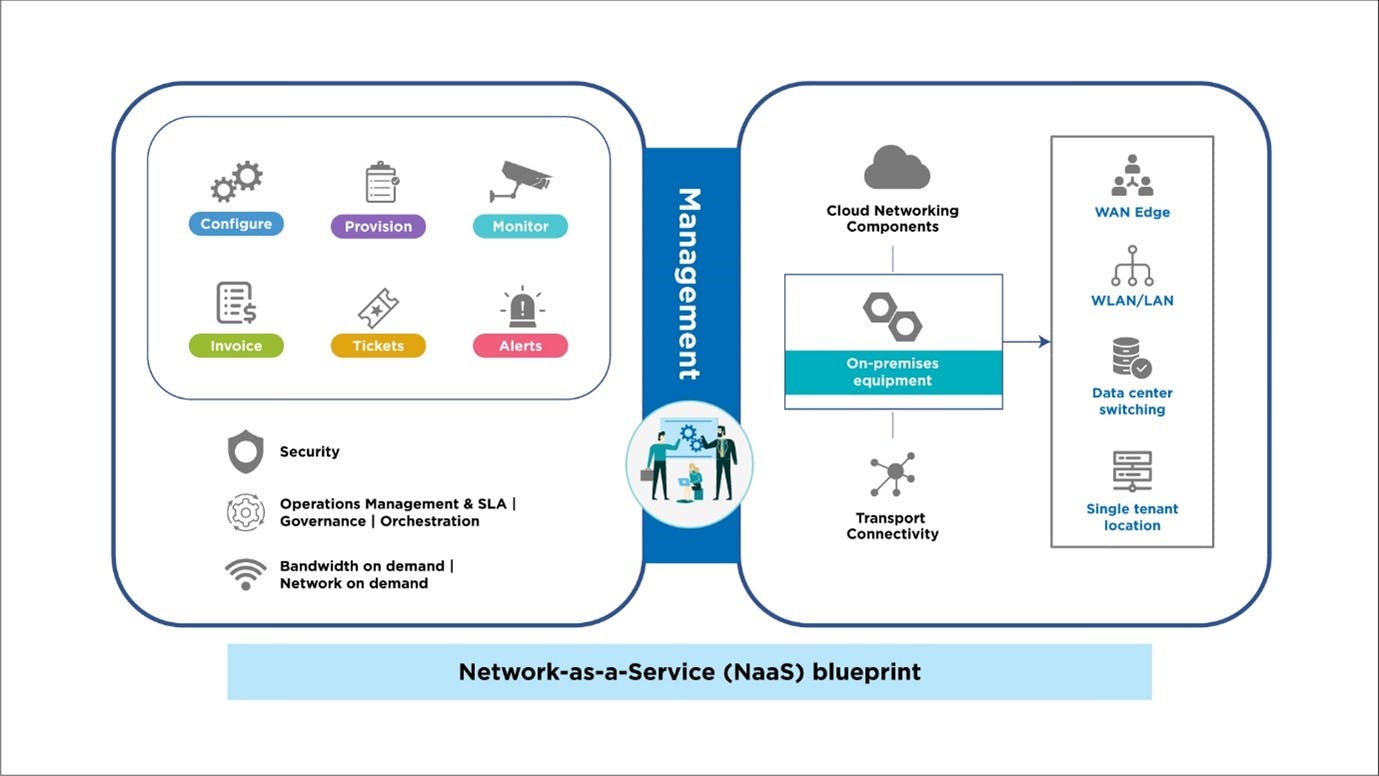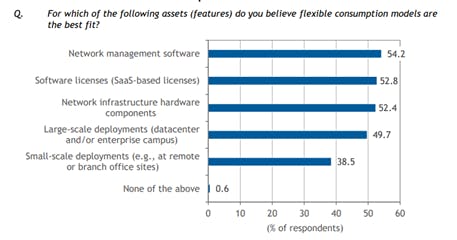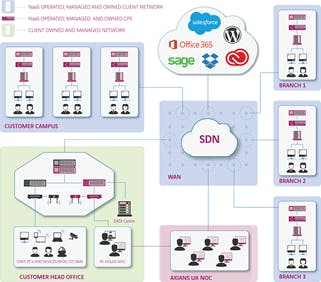Some say that 2021 was the year of subscription pricing. If that is the case, you can expect 2022 and beyond to be the years of consumption-based pricing approach. The COVID-19 pandemic has significantly driven new demand for everything (XaaS) – from everyday products, to entertainment, and even for enterprise network requirements needs. New-age automakers such as Tesla have started to position themselves as ‘Mobility-as-a-Service’ (MaaS) providers rather than simple carmakers.
However, consumers are starting to suffer from subscription fatigue. 47% of Americans are put off by the sheer number of subscription services available. With finely tuned pricing models, innovative businesses can offer consumers the choice of not just ‘what they buy’ but ‘how they buy’. Is it right to assume that we are at the ‘subscription economy’ tipping point? I believe ‘yes’.
This gives rise to consumption-based models where consumers only pay for what they actually use resulting in optimized spends. Just like they would do for a ridesharing service (Uber, Lyft); this model offer consumers greater convenience and flexibility with full ownership of expenses. However, not all areas are seeing the same outcomes for the highest benefits and impact. The prevalence and instances of this model in enterprise networking i.e., Network-as-a-Service is something that demands closer examination.
NaaS: The inevitable evolution of flexible consumption of enterprise networking
As-a-service consumption models is not a new phenomenon. What is novel is the kind of support the OEMs or MSPs would provide, which would eventually lead to expansion and growth of NaaS. The days of the enterprises to procure assets upfront and figuring out how to monetize that in a monthly OPEX model are slowly fading away. NaaS provides them an opportunity to scale without having to figure out it all by themselves.
Although, legacy enterprise networking equipment providers have not kept up with this trend. And even though resources such as storage and computing are being consumed as a service, thanks to cloud, network equipment and provisioning remain largely rigid in terms of expenses and how they are consumed by organizations. There is a distinct need for a transformation in how businesses engage with these services.
Businesses are looking for a blend of CAPEX-specific features such as holistic management and security with OPEX specific features such as flexibility, choice, and control. An IDC survey showed that more than 40% of respondents were open to flexible consumption of network and IT assets while “as-a-service” models continue to grow. The same survey also shows that 75% of infrastructure in edge locations and up to 50% of data-center infrastructure will be consumed in a similar model by 2024.

The emergence of Network-as-a-Service (NaaS) model in mainstream use with enterprises across multiple industry verticals show an increasing interest in flexible consumption models for the full range of network infrastructure, inclusive of hardware, software, and licenses. NaaS-based business models are primarily OPEX focused while traditional network sourcing offers both CAPEX as well as OPEX-centric models. This has several positive implications for businesses moving toward the NaaS adoption. This is also outlined by another IDC forecast that projects the enterprise cloud-managed networking market to exceed $6 billion by 2023 (see above illustration).
But this also raises several questions for enterprises - what does NaaS entail? How does it work? And perhaps, most importantly, how does the financial engineering takes place?
NaaS ushers in flexibility for OPEX financing
Historically, network infrastructure has been a capital expenditure (CAPEX) whereby assets are depreciated over time. In contrast, NaaS leveraged an operating expense (OPEX) approach where both the hardware and software are delivered via a subscription model where you only pay for the networking resources.
As enterprises have become more adaptable with OPEX models for leveraging IT infrastructure (e.g., cloud services), those models are increasingly being integrated with network infrastructure in place of CAPEX. According to IDC Aruba NaaS Study, 41.3% of respondents are using opex budgets to fund a NaaS offering, edging out a capex option. This can provide for more predictable costs and efficiencies, while reducing the upfront investment. Billing options can include per device, per user, amount consumed, or can be based on service levels.
Switching to NaaS changes budgeting considerations, as it entails a move from CapEx to Opex spending. This means the finance and procurement departments which came into discussion during the later stages, would be involved from the outset. Therefore, it makes sense for the IT and financial teams to collaborate early on shaping the NaaS strategy,
OEMs, through NaaS, are helping customers create ‘investment capacity’ to accelerate their network transformation initiatives by helping them free up capital, capture value from older assets, and weather financial volatility. In fact, NaaS service providers have also began recovering and refurbishing networking assists through dedicated global delivery centers helping more customers achieve their sustainability goals. And this reflects in the exponential growth of NaaS adoption across verticals.
NaaS: Introducing Network-as-a-Service
NaaS offering refers to an enterprise infrastructure that is consumed via a flexible consumption pricing model, inclusive of network infrastructure hardware components, software, management tools, licenses, network on-demand, and lifecycle-management services.


But contrary to popular belief, NaaS does not align with the typical understanding of cloud services. As Gartner reports, NaaS components are simply leased CPE regardless of enterprise payment mechanisms. In fact, cloud interconnect service offers from NSPs aren’t cloud services either. They are simply use-case-specific transport connections from enterprises to cloud service providers (CSPs). NaaS offerings also differ from traditional network sourcing as they offer significantly shorter go-to-market times than traditional network component providers.
NaaS deployment: Benefits and business models
With built-in upgrades and fully managed support, the NaaS model helps save costs not only in terms of infrastructure and maintenance but also through expertise. The freed-up capital creates investment capacity, accelerates transformation, and makes an enterprise resilient enough to weather financial volatility, crucially in a challenging business landscape. Here, the NaaS model offers several tangible business benefits, such as flexibility, innovation, scalability, security, business focus, and cost optimization.

Organizations considering NaaS deployment must assess the integration between management systems and network infrastructure with broader networks to facilitate seamless transition. Moreover, a careful consideration of the business goals and new growth opportunities will also dictate onboarding of network components to support them. And here, the NaaS ecosystem, with OEMs, NSIs and the Telcos, provides a range of engagement options allowing customers to choose as per their specific requirements.
NaaS can be consumed following several business models. Enterprises can either choose to go for a flat service fee or choose to pay for individual service subscription such as SD-WAN, security, or optimization. The OPEX nature of NaaS may appeal to SMBs with no existing WAN investment and new business owners. And with the rise in service models, even larger businesses are showing their interest.
The road ahead
The quest of enhanced productivity will lead enterprises toward as-service models like NaaS that lets them simplify and support new business requirements and workloads. As NaaS fosters business resilience and agility, it is slated to play a major role in enterprise transition to the cloud. Gartner already predicts NaaS adoption to grow up to 15% in 2025. And as cloud networks keep getting more complex with rapid surge in traffic, NaaS will be a compelling business case for enterprises to transform their network architecture with a distinct outcome-oriented mindset dictated by KPIs and SLAs.
Organizations seeking NaaS providers must exercise caution to find the right strategic partners that can not only alleviate their short-term concerns but also help them enhance organizational agility and competitiveness in the long run. This will not only drive, but also ensure the success of NaaS adoption in the future.
To learn more about getting started with NaaS deployment, connect with us at Contact.NGN@hcl.com


